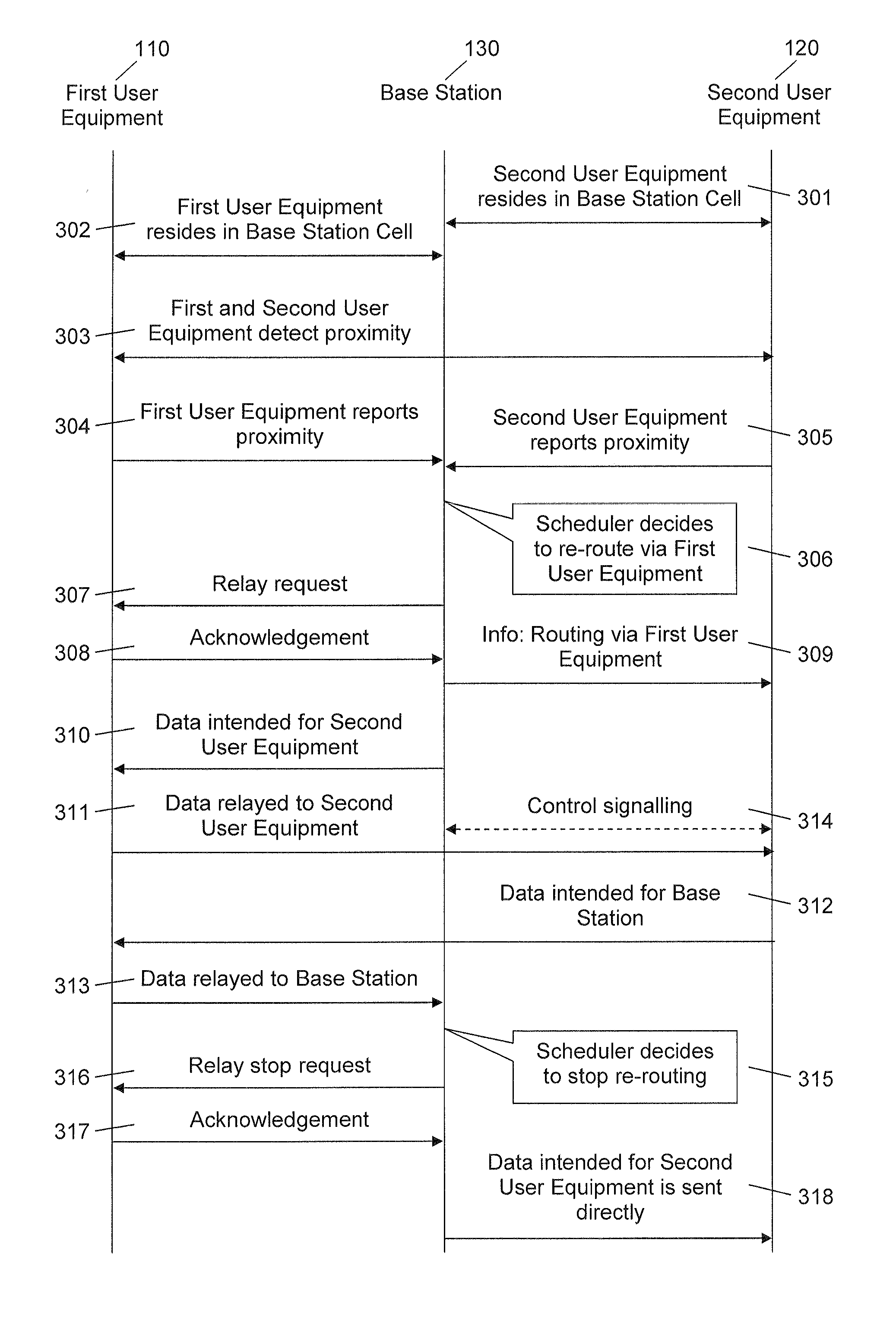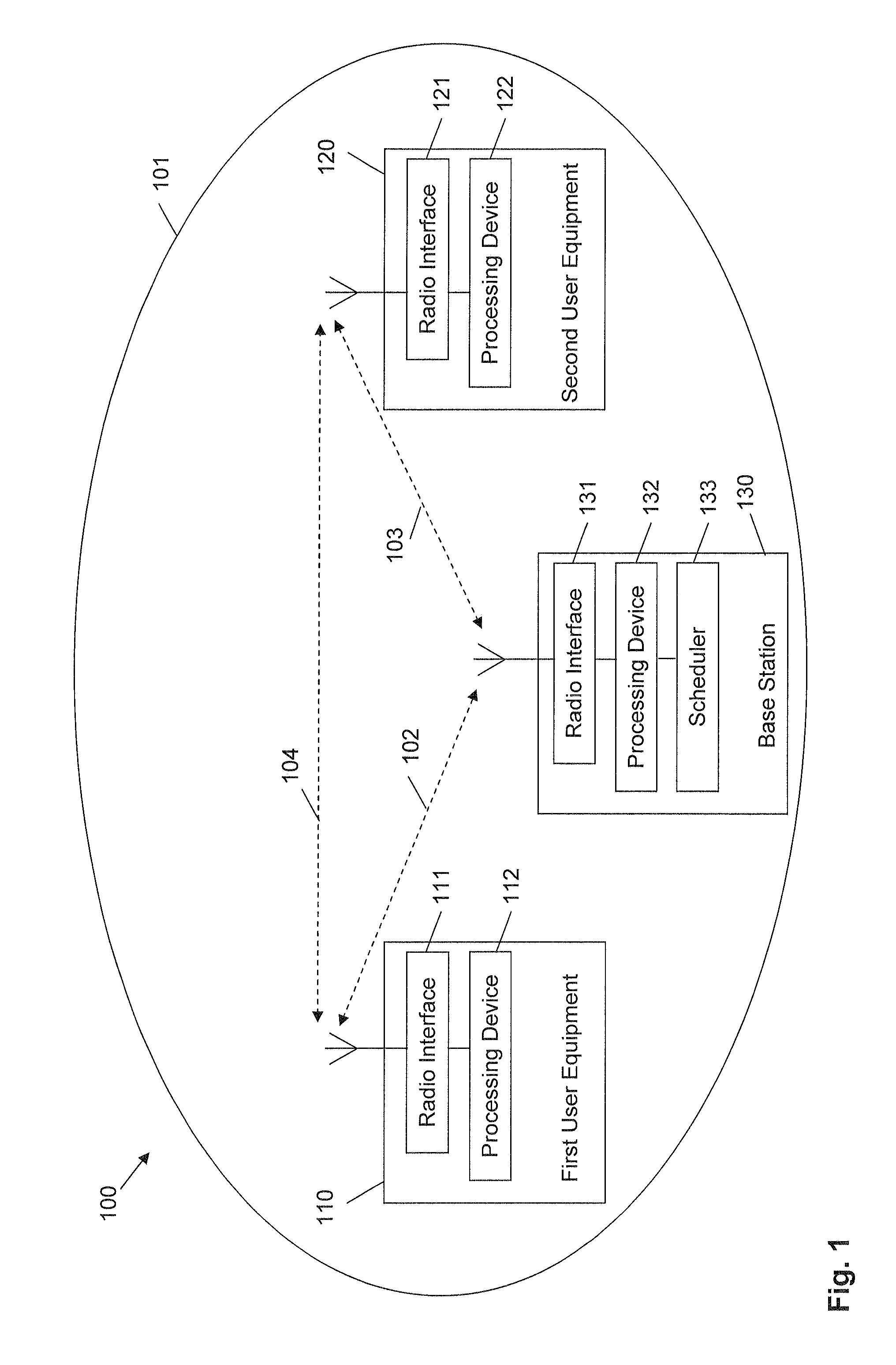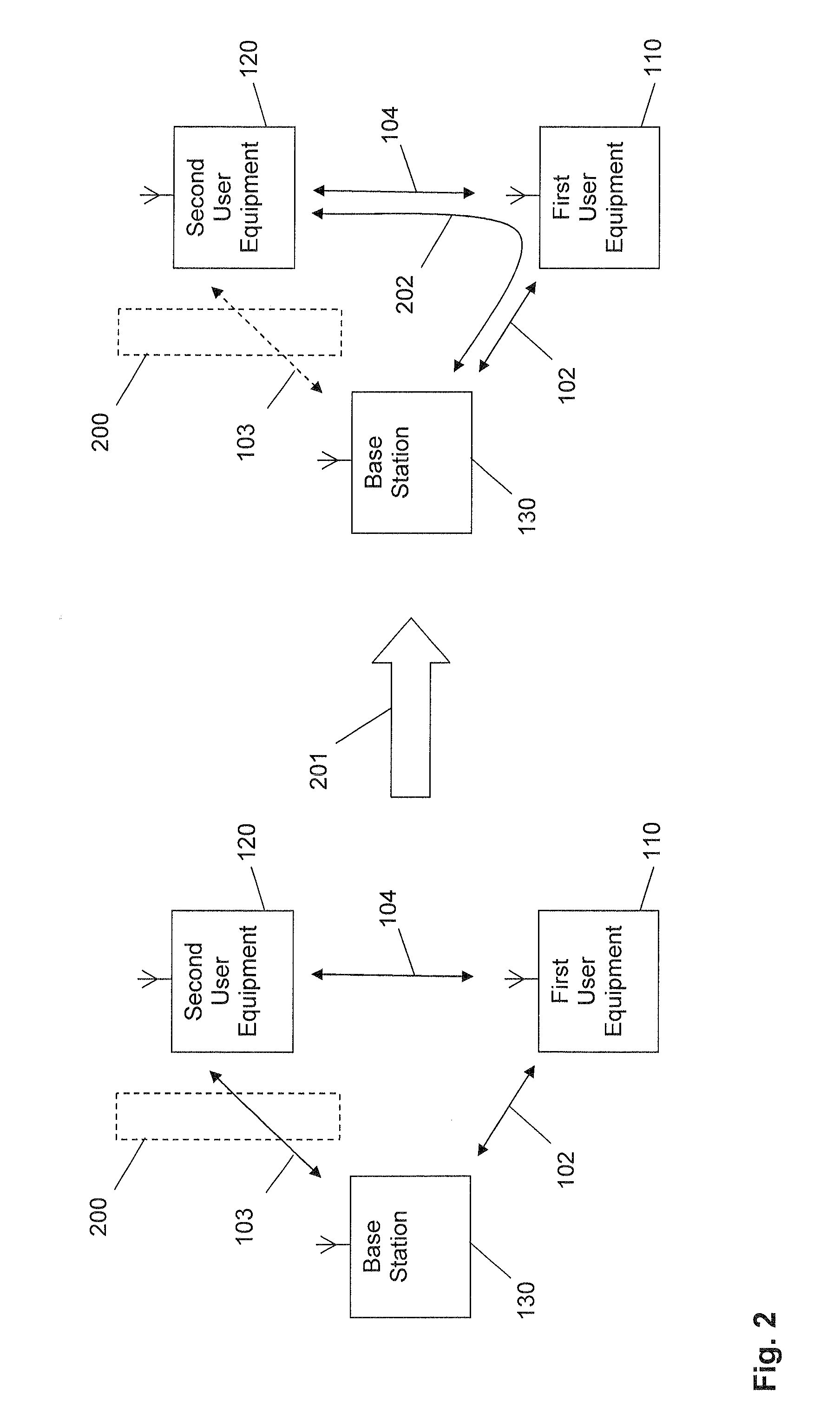Operating a base station of a radio access network
a radio access network and base station technology, applied in the direction of network data management, connection management, wireless communication, etc., can solve problems such as communication disturbance between the base station and terminal equipment, and achieve the effects of increasing system data capacity, dynamic data scheduling flexibility, and increasing aggregated radio link bandwidth utilization and system capacity
- Summary
- Abstract
- Description
- Claims
- Application Information
AI Technical Summary
Benefits of technology
Problems solved by technology
Method used
Image
Examples
Embodiment Construction
[0024]In the following, exemplary embodiments of the invention will be described in more detail. It is to be understood that the features of the various exemplary embodiments described herein may be combined with each other unless specifically noted otherwise. Same reference signs in the various drawings refer to similar or identical components. Any coupling between components or devices shown in the Figures may be a direct or indirect coupling unless specifically noted otherwise.
[0025]FIG. 1 shows a wireless communication system 100, for example a cellular based wireless telecommunication network. The communication system 100 may comprise a plurality of base stations. One of these base stations is shown as base station 130 in FIG. 1. For each base station a so called radio cell is assigned. A radio cell 101 shown in FIG. 1 is assigned to the base station 130. A user equipment, which is also called terminal equipment and which may comprise for example a mobile phone, a personal digi...
PUM
 Login to View More
Login to View More Abstract
Description
Claims
Application Information
 Login to View More
Login to View More - R&D
- Intellectual Property
- Life Sciences
- Materials
- Tech Scout
- Unparalleled Data Quality
- Higher Quality Content
- 60% Fewer Hallucinations
Browse by: Latest US Patents, China's latest patents, Technical Efficacy Thesaurus, Application Domain, Technology Topic, Popular Technical Reports.
© 2025 PatSnap. All rights reserved.Legal|Privacy policy|Modern Slavery Act Transparency Statement|Sitemap|About US| Contact US: help@patsnap.com



